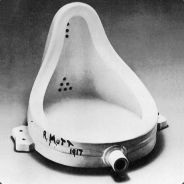by Christie Wilcox
Nearly everyone has fun on a carousel—including, possibly, fruit flies. Scientists observed some flies embarking on a spinning platform voluntarily and repeatedly, suggesting the animals may find the movement appealing for some reason, according to a study posted on the bioRxiv preprint server earlier this month.
“The flies are fulfilling all the criteria of play as we understand it in other animals,” says Samadi Galpayage, a behavioral scientist at Queen Mary University of London who discovered bumble bees play with objects and who was not involved in the work. “There isn’t really an alternative explanation so far. Whether that’s [evidence of] fun in itself—that’s the next question.”
Sergio Pellis, a behavioral scientist at the University of Lethbridge, says he finds the study—which has yet to be peer reviewed—“very exciting.” If confirmed, he notes, it would add to the small but growing pile of evidence for play in invertebrates—and would be the first instance of a type called “locomotor play” in these animals. Locomotor play involves the movement of one’s own body, such as running, jumping, or swinging. It’s different from object play, as bees have been observed doing, or social play, which has been observed in certain wasps and spiders.
The idea behind the study was inspired, ultimately, by a duck. Years before co-author Wolf Hütteroth became a neurobiologist, he remembers one day seeing a lone duck floating down a fast-moving river. Just as the animal was nearly out of sight, it flew back upriver, alit on the water, and floated back down—over and over again. “I never stopped wondering what motivated the duck to perform such curious behavior,” he says.
In February 2016, Hütteroth attended a symposium where researchers were discussing whether insects can act with intention. He pondered how to test whether flies would do something similar to the rapids-running duck.
He and Tilman Triphan, a colleague then at the University of Konstanz, decided to build a carousel of sorts. They’d offer male laboratory fruit flies (Drosophila melanogaster) the chance to hop onto a spinning section of floor in a stress-free, if otherwise unexciting, environment. He didn’t think the flies would actually go for it. “My expectations were extremely low,” he says. Some of the flies ignored the contraption. But a small group of them acted as if they’d just discovered Disneyland.
Triphan and Hütteroth—who have both since moved to the University of Leipzig—report in their preprint that a subset of the flies spent 5% or more of their time on the turning wheel. When the researchers put two disks in the arena that alternated spinning every 5 minutes, some flies spent their time bouncing back and forth between whichever carousel was spinning.
Fruit flies are excellent spatial learners, Hütteroth notes, so if they didn’t like to spin, they could have simply avoided the disk, as some did. The majority were somewhere in between—not overly enthusiastic, but also not avoidant of the spinning disks.
So, were the flies riding the carousels—for lack of a better word—playing? It’s certainly possible, Pellis says. “It’s clear that at least some of the flies are engaging in this locomotor behavior just for the hell of it.”
The fact that some flies apparently liked the carousel and others didn’t came as no surprise to University of Tennessee, Knoxville, behavioral scientist Gordon Burghardt, an expert on play in nonhuman animals who wasn’t involved in the study. “You take a bunch of kids to the fairground, and some are really anxious to get on the rides while others are a little more hesitant.”
Still, Hütteroth hesitates to claim the flies were having fun. After all, the flies didn’t reveal their motivations to the researchers. But to Pellis and Burghardt, the idea isn’t so crazy. According to Burghardt, the flies could be experiencing something akin to what we feel when we ride a roller coaster or go down a slide. “I see no reason why other species, even invertebrates, could not share in this aspect of life,” he says.
The next steps in solving this riddle may come from studying the flies’ brains to uncover the neural circuitry involved in the carousel behavior, Hütteroth says. Such research could help explain what benefit flies—or any other animal—might derive from locomotor play. “What is the adaptive value of this kind of play behavior? Is it good for anything?” Hütteroth asks. For example, does it perhaps refine an animal’s perception of their own body, a sense known as proprioception?
Pellis notes there has been resistance to the idea that animals outside of mammals engage in play. He recalls research in the 1970s on roughhousing in cockroaches, for example, that would immediately be considered an example of play if puppies were doing it. Now, he says, there are enough solid examples of play in other species that it makes sense to ask just how widespread various kinds of play are across the animal kingdom.
Ultimately, the findings suggest locomotor play “might really be deeply rooted in our evolutionary history,” Burghardt says. So, it’s possible it’s happening all around us—and we’ve just been too focused on the playful antics of furry critters to notice.

